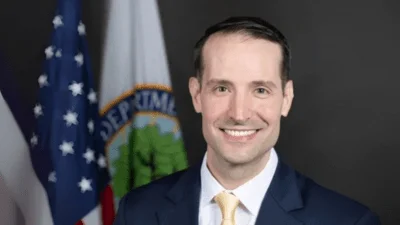The Biden-Harris Administration today released the President’s Budget for Fiscal Year 2024. The budget details a blueprint to grow the economy from the bottom up and middle out, lower costs for families, protect and strengthen Medicare and Social Security, and reduce the deficit by ensuring the wealthy and big corporations pay their fair share—all while ensuring no one making less than $400,000 per year pays more in taxes.
“The President’s budget provides USDA with the tools needed to serve all Americans by providing effective, innovative science-based public policy leadership at home and around the world. It contains critical investments that will help rural communities provide the fuel, food, and fiber upon which our nation depends and will drive solutions that will lead to more market opportunities for producers,” said Agriculture Secretary Tom Vilsack. “USDA will continue to invest in equitable systems and programming, increase landscape resiliency and help rural communities build resistance to the impacts of climate change, create more and better markets for our hardworking producers, bolster access to healthy and affordable nutrition for families, and connect all Americans to economic prosperity. This budget is a clear message of what President Biden values and demonstrates the Administration’s commitment to the success of Rural Americans and their communities.”
The budget makes critical, targeted investments in the American people that will promote greater prosperity and economic growth for decades to come. At USDA, the budget will:
- Prioritize consistent access to safe, nutritious food for all Americans. The budget supports the goals of the 2022 White House Conference on Hunger, Nutrition, and Health to improve health outcomes and reduce diet-related disease by 2030 by providing $32 billion for Child Nutrition Programs that help kids meet their nutritional needs. Additionally, the budget continues the longstanding bipartisan commitment to fully fund the SNAP and WIC programs to serve all projected participants and ensure access to USDA’s far-reaching, powerful tools. The budget also fully funds the work of the Food Safety and Inspection Service in keeping the food supply safe, contributes to ongoing work to provide international food assistance, and invests in innovative research needed to feed a growing population. The budget also proposes to allow more States and schools to leverage participation in the Community Eligibility Program to provide healthy and free school meals to an additional 9 million children, at a cost of $15 billion over 10 years.
- Invest in climate resilience and U.S. agriculture’s ability to continue be part of the climate solution. As part of President Biden’s whole of government approach to confronting the climate crisis, the budget supports $1.2 billion in continued investments in USDA’s hallmark conservation programs and for work with landowners to improve farm operations and enhance farm environmental sustainability. The budget includes over $5 billion to restore our national forests and mitigate wildfire risk, a significant investment to prioritize and target landscape treatments under the 10-Year Wildfire Crisis Strategy. Further, the budget increases investments in grants and lending authority to support rural communities in the transition to clean energy and invests in expanding the reach of the USDA Climate Hubs that provide technical assistance to producers to help tackle the climate crisis.
- Advance equity and support for underserved communities. USDA is committed to enhancing how economic, social, and ecological benefits deliver resources and results for all Americans, particularly by making equity a priority and removing systemic barriers. To target assistance based on need, the budget proposes a suite of changes to the Farm Service Agency’s diverse portfolio of farm loans to make more producers eligible. The budget also supports significant changes to how USDA administers Direct Single Housing Family loans to support rural Americans in being successful homeowners, including eliminating the low-income borrower penalty that requires home-owners to repay the subsidy costs of their loan. The budget requests $370 million for Minority-Serving Institution (MSI) programs to meet the need of growing the next generation of agriculture professionals. To expand equity in rural communities, the budget proposes $2.38 billion for the Water and Wastewater program to improve water and waste disposal systems in rural areas, and requests $400 million to reach more communities, homes, and businesses with reliable internet access.
- Create more and better markets for U.S. agricultural products. The budget builds on USDA’s work to transform the nation’s food system by making it fair, competitive, distributed, and resilient and by building new markets at home and abroad. The budget builds on $400 million in investments through the American Rescue Plan (ARP) by investing over $240 million in supporting new supply chains and markets that uplift small and mid-sized farmers. The budget also requests an additional $12 million in the Farm to School Program that assists in making local food and agricultural education available to child nutrition program participants through grants, research, technical assistance, and training.
- Make USDA a great place to work and reform the Firefighter Workforce. The budget helps to support the investments necessary to ensure that USDA staff are well-equipped to deliver critical services and meet customer needs. Of significance, the budget requests $569 million for a suite of critically needed wildfire firefighter workforce reforms, including improved compensation, increased workforce capacity, vital health and well-being assistance, and improved housing. The budget provides increased resources to recruit, hire, and retain employees across USDA, which will allow the Department to address priorities, bolster the delivery of programs and services, and enhance service to the public.
For more information on the President’s FY 2024 Budget, please visit: www.whitehouse.gov/omb/budget.
Original source can be found here.





